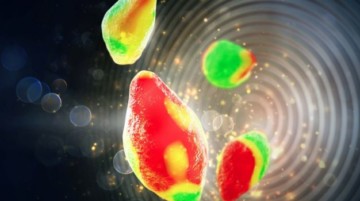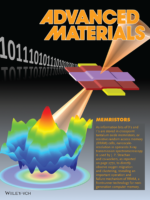Researchers are using the Office of Science’s advanced light sources, including the ALS, to understand why and when lithium-ion batteries in phones, plug-in electric vehicles, and other applications lose charge or fail. Read more »
Transformational X-Ray Project Takes a Step Forward
DOE has confirmed the need for a unique source of X-ray light that would produce beams up to 1,000 times brighter than are now possible at Berkeley Lab’s Advanced Light Source, enabling new explorations of chemical reactions, battery performance, biological processes and exotic materials. Read more »
ALS Engineers Resolve Power Supply Failure, Bring ALS Back Online
On Thursday, July 28, the power supply to the ALS booster bend magnets failed. Over the course of nearly six days, more than 20 ALS staff worked long hours to resolve the failure and get the ALS back online. Read more »
Ambient Pressure XPS and IRRAS Investigation of Ethanol Steam Reforming on Nickel–Ceria Catalysts
Ambient-pressure x-ray photoelectron spectroscopy (AP-XPS) and infrared reflection absorption spectroscopy (AP-IRRAS) have been used to elucidate the active sites and mechanistic steps associated with the ethanol steam reforming reaction (ESR) over Ni–CeO2(111) model catalysts. Read more »
MAESTRO Beamline Set to Open to Users
This September, Beamline 7.0.2, MAESTRO, will accept general user proposals for the first time. Its unique attributes combine strong sample preparation capabilities with cutting-edge spectromicroscopy tools, offering researchers unparalleled opportunities for studying the correlation between structure and electronic properties. Read more »
Quantitative Microstructural Imaging by Scanning Laue X-ray Micro- and Nanodiffraction
Synchrotron Laue x-ray microdiffraction turns 20 this year. The June 2016 issue of MRS Bulletin is dedicated to synchrotron radiation research in materials science and features a review article on the current capabilities, latest technical developments, and emerging applications of Laue x-ray micro- and nanodiffraction co-authored by ALS beamline scientist Nobumichi Tamura. The cover image shows a Laue x-ray microdiffraction pattern from a sea urchin tooth taken on Beamline 12.3.2. Read more »
BESAC Announces Results of Facility Prioritization Upgrade
On Thursday, June 9, DOE’s Basic Energy Sciences Advisory Committee (BESAC) released the recommendations of the BES Facility Upgrade Prioritization Subcommittee. I’m pleased to announce that the subcommittee considers ALS-U “absolutely central” to contribute to world leading science and “ready to initiate construction”–the highest possible ratings. Read more »
ALS-U Update: BESAC Announces Results of Facility Upgrade Prioritization
On Thursday, June 9, DOE’s Basic Energy Sciences Advisory Committee (BESAC) released the recommendations of the BES Facility Upgrade Prioritization Subcommittee. I’m pleased to announce that the subcommittee considers ALS-U “absolutely central” to contribute to world leading science and “ready to initiate construction”–the highest possible ratings. Read more »
In-situ Characterization of Highly Reversible Phase Transformation by Synchrotron X-ray Laue Microdiffraction
In situ measurement of the orientation matrices for the austenite and martensite phases of the alloy Cu25Au30Zn45 across the interface was performed by synchrotron x-ray Laue microdiffraction at the ALS. Together with theoretical calculations, researchers verified directly and quantitatively the factors that contribute to the alloy’s elastically compatible interface, which ultimately leads to the ultralow fatigue property of phase transformation in martensitic materials. The approach can be generalized to characterize the evolution of microstructure when the transport properties are sensitive to the structural compatibility at the heterogenous phase boundaries. Read more »
Direct Observation of Localized Radial Oxygen Migration in Functioning Tantalum Oxide Memristors
As information bits of 0s and 1s are stored in crosspoint tantalum oxide memristors, or resistive random access memory (RRAM) cells, nanoscale-resolution in operando x-ray transmission spectromicroscopy is used to directly observe oxygen migration and clustering, revealing an important operation and failure mechanism of RRAM, a frontrunner technology for next-generation computer memory. Read more »
- « Previous Page
- 1
- …
- 14
- 15
- 16
- 17
- 18
- …
- 20
- Next Page »








